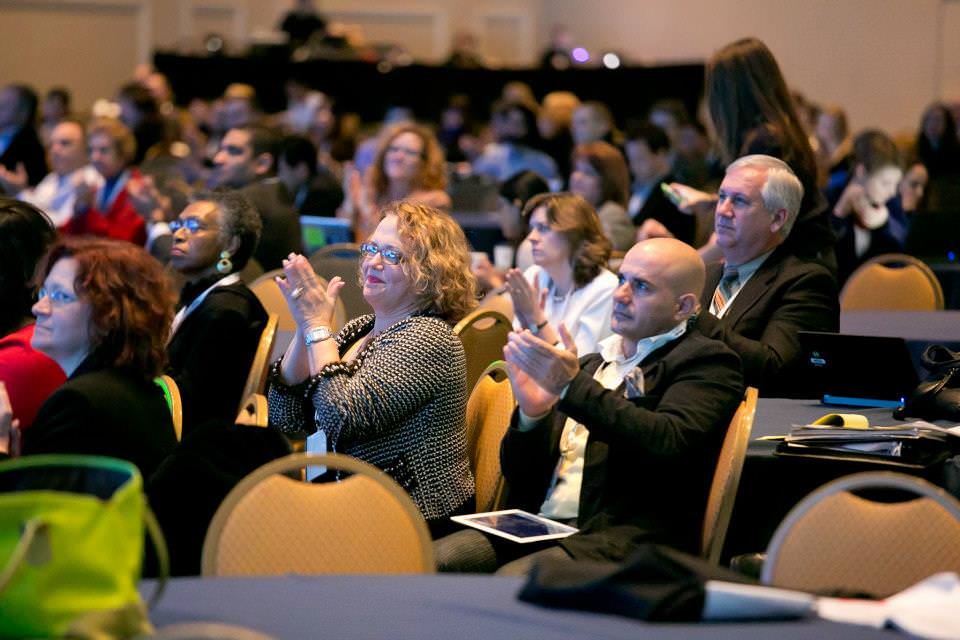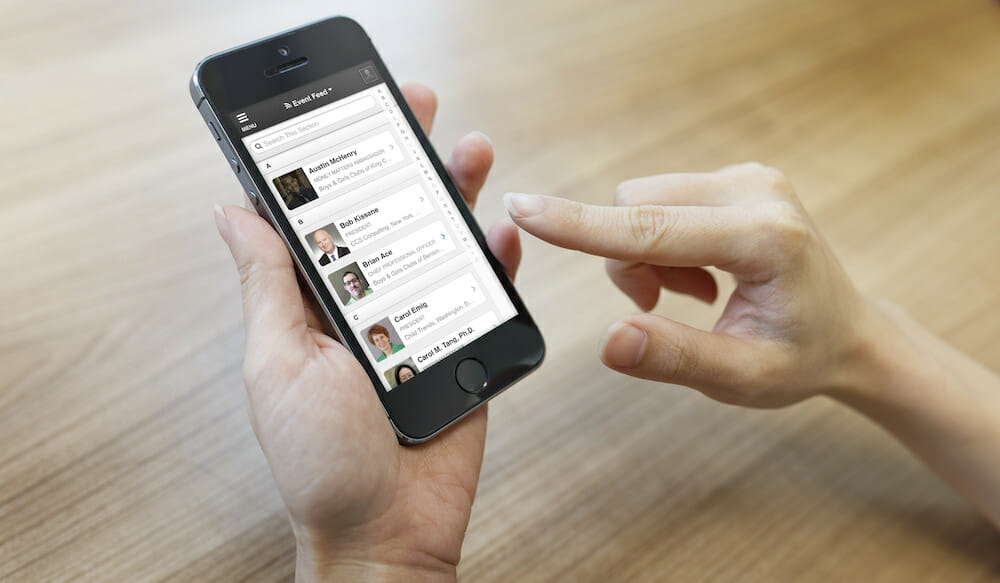8 Tips to Creating a More Personal Event Experience
Connecting with each other is the central focus of any event. Whether you’re trying to rally people behind a cause, bridge the gap between businesses and potential clients, or educate a group of industry professionals, your task as a planner is to identify an audience and create the perfect vehicle for valuable, relevant content.
So, what’s the best way to connect with your attendees? How is it relevant to what each attendee is looking to accomplish? Focus on making the experience personal. The technology exists, the data is there.
Here’s a quick guide to improving the quality of your connections, expanding your audience, and creating the personal experience you need to keep everyone engaged.
1. People Trust in Thought Leadership
Whatever the reason might be for holding your event, a reputation for delivering valuable, can’t-miss content will make every other aspect of your event promotion easier.
A blog is a fantastic way to gain this kind of renown. By showcasing topical, relevant content of interest to your target audience, you can prove that you’re qualified to decide what information is beneficial and what can be culled. To have a successful blog that functions as a knowledge base for your audience, be as consistent as possible, but more importantly, contribute high quality ideas and contributions to the conversations happening at the forefront of the industry.
Don’t have the time or resources to generate relevant, original insights on a regular basis? Try hosting a webinar series, or bringing expert guests to the table. Both are solid methods of increasing your online audience and boosting your reputation as a reliable source of content.
To deliver content that your attendees value, you need to keep a beat on it throughout the year. Don’t be afraid to incorporate content they liked from previous years either. Mixing classic, well-established knowledge with new trends provides a basis for analysis and comparison that can only lead to more intelligent, beneficial discussions — and that means higher engagement. .
During your actual conference, highlight any blog contributors in attendance. “John Smith was featured in our July blog post on modern business ethics, and we thought it would be a good idea to bring him here to talk to you today.” Now, John is a champion and has a reason to contribute to your blog again in future, and you have a demonstrated ability to showcase influencers and make them accessible to your audience.
2. Cast a Wide Net
Social media is so ubiquitous that it has become a reflex for anyone trying to expand an audience and keep it engaged. A healthy social media presence can generate valuable buzz about your event, bolster attendance, and keep your event’s momentum going far beyond the end-date. You can even mine the feeds for potential content and find out what topics, speakers, or features the attendees are excited about. Use this insight to figure out what to emphasize and how to invest your time and resources.
Use social media tools like Followerwonk, Sprout Social or Hootsuite to understand who follows you and what they value. Identifying and targeting your major influencers makes them feel more valued while offering you the start to a very effective word-of-mouth campaign.
3. Follow Up With Precision
While social media hits a wide audience and extends your reach, targeting segments is a great way to boost your renown and foster a great relationship with your core audience. Segment-specific email campaigns, for example, allow you to deliver the most relevant, impactful content. Using personalized messaging to deliver thoughtful content will engender trust in you and your brand, ensuring a great turnout.
If you create a two-way channel, it can also be a great way to get specific, qualified feedback about your event without letting your whole audience know you’re even looking for it. The reward for your core audience is a more tailored event experience.
4. Personal Onsite Messaging
At the event, alerts within your event app can take targeting even further. Let’s say your attendee list comprises general industry professionals and VIPs, and you’d like to invite the latter to a high profile networking event. Perhaps you’d like to isolate a group of hosted buyers or key decision-makers and give them an exclusive time-slot on the tradeshow floor. EventMobi allows you to establish those groups within your attendee listing and send them targeted messaging so you can connect with precision.
5. Turn Your Event App Into a Megaphone
Alerts are also a great way to convey essential information to everyone. Wielding just your meeting app, you can broadcast room changes, speaker shuffles, special promotions, or anything else that comes up. EventMobi also gives you the option of pairing your alert with an email or push notification to make sure that, whether they’re on the event app or not, everyone will get the message.
This can make your event app a vital asset in a crisis. In 2013, a Calgary planner awoke on the day of her event to find that a massive flood had submerged the event site (and 20+ other neighbourhoods). Event app to the rescue! She was able to use the alerts within the app to keep her attendees abreast of essential updates, emergency protocol, and necessary cancellations.
Offering timely, contextual data will ensure attendees feel valued and important – even in challenging times.
6. Turn Your Spectators Into Participants
Another tried-and-tested way to engage people and crowdsource ideas for content is through event surveys. You can deliver these impactful feedback goldmines in all kinds of correspondence, from alerts to email communications. Leading up to your conference, create a survey on the event app to gauge the level of interest in your topics, speakers, and sessions. Ask questions that help you determine the average level of expertise in a particular subject to help your speakers avoid anything too high or low-brow. Your attendees will appreciate the research and it’s a great way to bolster your app usage leading up to the event.
During sessions themselves, attendees can also participate in live, interactive polls. Get your speakers excited about their upcoming sessions by offering them this easy engagement tool. Have them submit their questions to you in advance so you can create the poll, incorporate it into their presentation, and rehearse it to ensure a seamless transition into and out of it.
Not only is your speaker better engaging attendees, each and every attendee can personally contribute to the educational experience. Check out our post on 3 Simple Ways You Can Improve Your Session Q&A.
7. Attendee-to-Attendee Connections Should Be Smooth and Secure
Creating a more personalized experience for your attendees doesn’t mean you have to do all the heavy lifting. Encourage attendees to reach out and make new connections with one another.
Attendees can send messages using private in-app chat. Messages are stored within an attendee’s personal inbox, accessible by email login. People at the event can even connect with remote participants provided that everyone is on the event app, and all the correspondence is private and secure.
8. Tracking Engagement is Integral to Improving Engagement
What you do in the wake of your event is almost as important to the quality of your content as the planning beforehand. Gathering good qualitative data about your content is essential for improving it from year to year. We’ve discussed a number of ways to get feedback and crowdsource your content: mining social media feeds, surveys, live polls.
Another element in your data collection that cannot be over-emphasized is event analytics. These days, you can track almost everything your audience, and subsequently your attendees, do digitally. From your social media page to your registration page, and well into your event app, every click leaves a footprint and you’ll thank yourself for finding a qualified service to track them.
From pageviews to unique visitors, ad impressions to attendee behavior, any event software provider should be prepared to give you access to the data. This will give you invaluable insight into what people liked and how much they used the tools you invested in. Where were people making the most connections? How many people were engaged in the keynote session? Was there a lot of activity at the networking event, and were people networking before it started?
Analytics offers answers; the challenge is to ask the right questions. Real-time and post-event reporting offers access to insights that will help you achieve better, more personal experiences for your event participants.
Whether you’re choosing a smarter technology or operating more strategically, these are some small steps you can take to ensure that each and every person at your event enjoys rich, relevant content and a valuable, highly tailored event experience.


